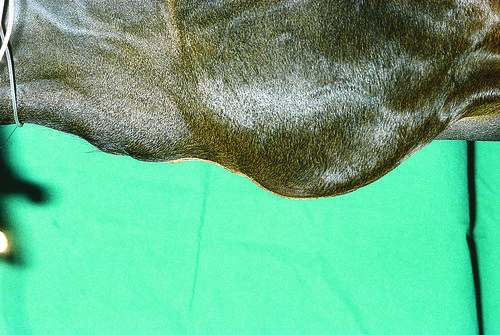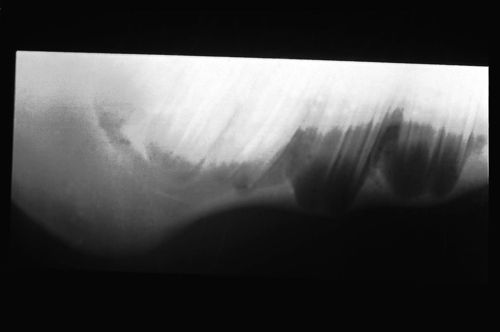Difference between revisions of "Veterinary Dentistry Q&A 20"
Ggaitskell (talk | contribs) |
|||
| Line 1: | Line 1: | ||
| + | {{Template:Manson | ||
| + | |book = Veterinary Dentistry Q&A}} | ||
| + | |||
[[File:Vet Dentistry 20a.jpg|centre|500px]] | [[File:Vet Dentistry 20a.jpg|centre|500px]] | ||
<br> | <br> | ||
Revision as of 22:58, 12 October 2011
| This question was provided by Manson Publishing as part of the OVAL Project. See more Veterinary Dentistry Q&A. |
Shown here are a radiograph and a photograph of a young horse with ‘three year-old bumps'.
| Question | Answer | Article | |
| What are these swellings? | Eruption cysts. They arise in young horses when the ventral mandibular cortex becomes distorted by the expansion of the underlying dental sacs before eruption of the permanent dentition. These sacs contain the primordial tissues from which the permanent premolar teeth will differentiate. In Thoroughbreds, eruption cysts are far more common in the mandible than in the maxilla. Ponies are usually involved when the cysts arise in the maxilla. In general terms, eruption cysts are self-limiting and of cosmetic importance only. The precise mechanisms of dental eruption are not known but the process should be correctly aligned with the eruption pathway clear of obstructions. Some believe that eruption cysts are the result of impaction, but it is difficult to explain how the eruption pathway of all three premolar teeth can become obstructed at the same time, as it is common for three swellings to be present in the same horse. Impaction is most likely to arise when a permanent neighboring tooth lies across the path of the eruption, or when the space between the teeth on either side is too narrow. The fourth premolar, being the last permanent tooth to erupt, is the most vulnerable. The result of impaction is that the crown cannot advance into the mouth and therefore the root structures build up aborally. True impaction is more common in the mandible and causes a large, discrete ventral swelling. |
[[|Link to Article]] | |

